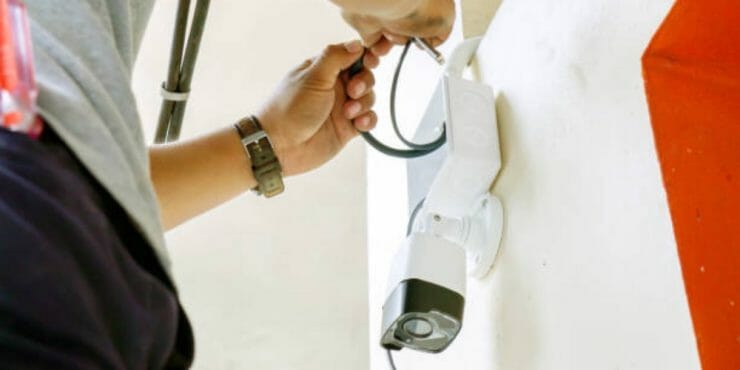When running a wire to your camera, it’s important to protect your equipment from damage. A few simple tips can help keep your cable wires safe.
During installation, protecting wires is important too, as a single break or tampering can compromise the whole system.
The ollowing are five ways you can protect security camera wires.
1. Wire Inside The Wall
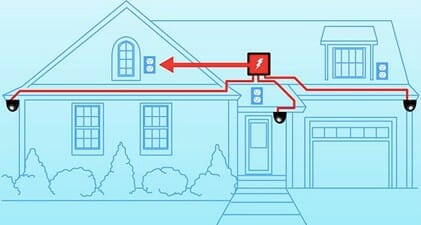
The best way to protect the security camera wires is to have them installed within the property’s walls. With wires inside the walls, it is challenging and almost impossible for intruders to tamper with them, increasing security cameras’ protection.
Try not to install wires that cannot be put directly in the wall; it’s better to use coating materials such as fiberglass rods. Remember, wires running within the walls can also be dangerous, so I suggest that you get a professional to install the wires. However, if you choose to do it yourself, follow the steps:
- Turn off the power before placing the security cameras.
- Drill holes on the points you want to enter the wires and use a metal coat hanger to examine any unforeseen obstructions inside the walls.
- Insert the wires, and perform a test run for the camera.
2. Paint The Cables
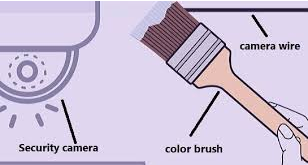
Want to protect your security camera wires the easy way? Paint them!
Paint the wires with the color of the wall to blend them with the outside environment and bury the wires with the background. Try to find wires of similar color as the background where you have planned to locate the wires. It makes it easy to merge the wires with the background.
Install the wires alongside the walls; you can paint them before placing or mounting them. But if you choose to paint after setting up the camera and the wires, don’t forget to paint the wires before turning the camera on.
Paining the cables makes it one of the easiest and most efficient ways that make it unnoticeable for trespassers. And by the time they are busy locating the wires, you will be able to detect the intruders.
3. Cover The Cables In Protective Sheathing
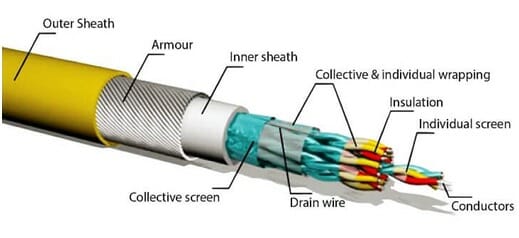
Wires can be easily cut, and the whole camera system can be tampered with and stopped with a single cut. But that’s not it; often, the wires and cables are cut by theirs to steal the metal used in the cables. They use them for reselling and gaining some profit or money from it.
Don’t become the victim of metal vandals; secure the cables through the protective sheathing. You can protect the cables with as much sheathing as you want. The sheaths will act as a fit sleeve over the cable, preventing your camera system from being tampered with.
If you are willing to cover the cables with one sheath, don’t use an old one that can be slashed easily. Polyvinyl Chloride is one of the most commonly used sheath materials; however, the following are the materials that can also be used for sheathing:
- PVC
- Teflon
- Silicone
- Kapton
4. Use The Baseboards
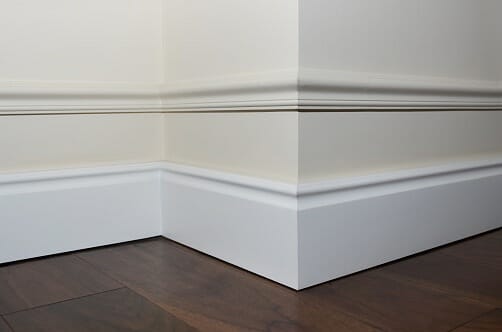
Want to run the security camera wires in the tidiest way? Use a baseboard to hide and protect the security camera wires. You can conceal and make the place look tidy and attractive by running the wires behind the baseboard.
Baseboards are narrow boards that run along the walls as a form of the panel between a wall, floor, and ceiling, which can be easily planted and detached. (1)
Follow the steps below to protect security camera wires through baseboards:
- Remover the placed baseboards (skip if there are no baseboards)
- Run the wires or cables between the wall and floor or ceiling gap
- Place and push the baseboards to fit and ensure that the wires are in place and intact
5. Wireless Security Cameras

Still worried about protecting the wires? Worry no more and get a wireless security camera system. Choosing a wireless security camera system means you don’t have to worry about wires, stealing, and tampering.
Wireless security cameras come with batteries or solar-based chargers, which can be effortless, placed anywhere you want, and power the system quickly. Remember, wireless security cameras are expensive and might not always be wire-free; they can need a power cable with its power source.
Although wireless security cameras are costly, it saves messy cables and time to protect the wires and cables. The convenience of wireless security cameras makes it a viable and hassle-free option with a little more cost but with more ease and protection.
6. Plastic Tubing for the Wires
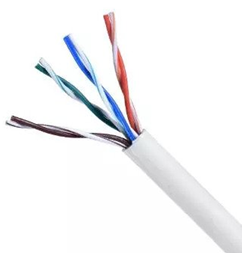
Another effective way to protect the wires and cables for your security cameras is through plastic tubing. You can use plastic tubes to cover the wires and cables and protect them from slashing, tampering, and external damage. Protecting the cables also means saving them from harsh weather conditions, which can be successfully done by passing the wires through plastic tubes.
The only issue you can face is accessing the wires during an emergency. However, it is a bit complicated if you aren’t tech-savvy, but not impossible to install by yourself.
- Measure the length of the wires.
- Cut the plastic tube as needed, or join different tubes to cover the length.
- Make sure that the joints are sealed and not visible
- Pass the wires through the tube
7. Hide the Wires inside the False Ceiling
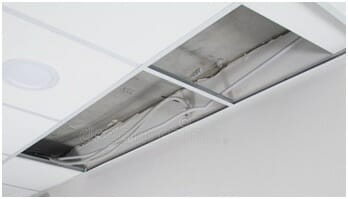
Protecting wires through a false ceiling is the best option if your property has a false ceiling; otherwise, it can be costly. A false ceiling makes the wires completely protected and hidden from intruders. At the same time, wires hidden behind false ceilings have a risk of rat attacks.
Don’t forget to ensure that the gap between the ceiling and the false ceiling is not a home for any animal or bird. Similarly, close any entry point for intruders that can disrupt your security camera system.
- Analyze the gap between the ceiling and the false ceiling.
- Make points and drill entering the wires from the outside or through any open space between the ceiling and the false ceiling.
- Feed the cable and wires through the gap where you want them to be.
- Cover any holes or entry points for birds or rats.
8. Pass Cables Through Conduits
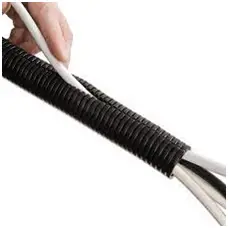
Passing cables through conduits is one of the key ways to protect wires from intruders, water, and electrical hazards. It is also one of the easier ways to protect wires and makes the wires be used flexibly. (2)
However, plastic is used for conduits, making it hazardous and flammable. But the conduits act as an overall protection cover that makes the wires easily accessible. Pursue the following steps:
- Cut the conduits or place wires in the conduits through the endpoint
- Leave them in the open or burry them to make them more protected
- Place a waterproof lip on the cut and end on the conduit to increase the cables protection
Securing the wires will ensure that the security camera system is working efficiently and save you from any danger. Using any of the ways presented above will protect the security camera wires from intruders, animals, extreme weather conditions, and theft.
You can protect the wires by yourself or use the help of a professional to ensure that the wires, cables, and the whole security camera system are protected.
References
(1) baseboards – https://www.familyhandyman.com/project/how-to-install-baseboard-molding-even-on-crooked-walls/
(2) electrical hazards – https://ehs.princeton.edu/book/export/html/75

